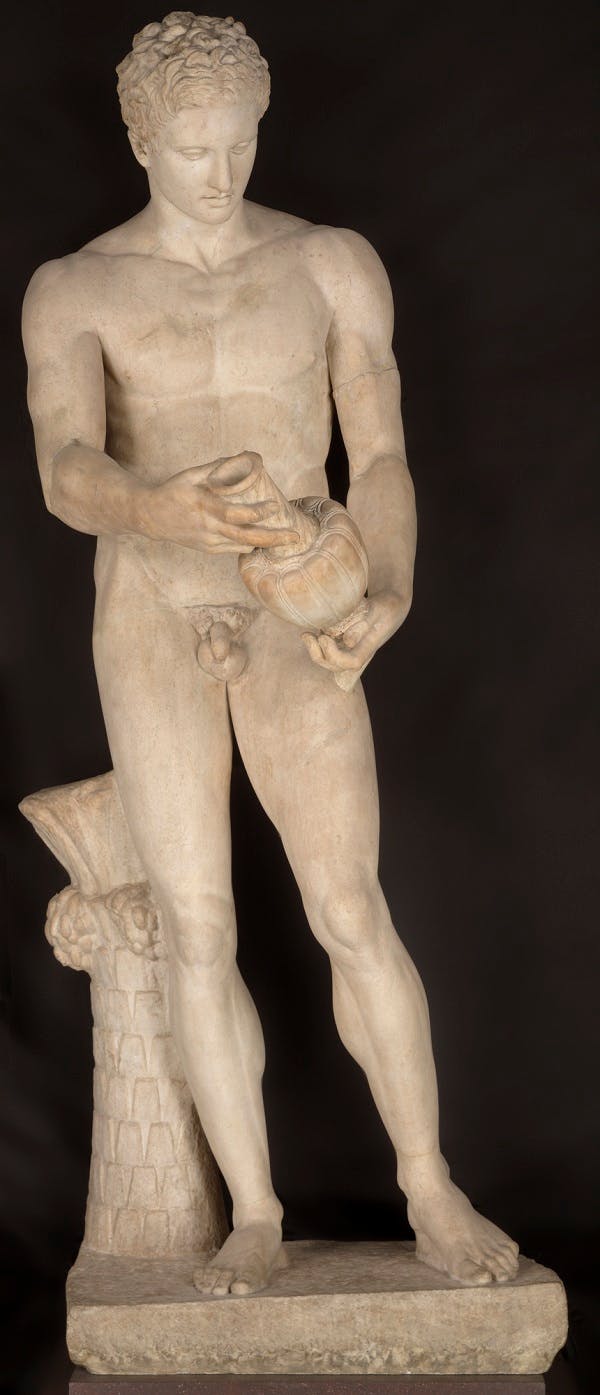Apoxyomenos
Roman art
The statue of Apoxyomenos (or the “Scraper”), most likely came from Rome around the middle of the 16th century and was taken to the Uffizi during the period of its construction, in the late 1500s, after a period on display in the Nicchie Room in Pitti Palace. The statue, of a nude athlete, is a copy of a bronze original that can be dated to around the mid 4th century BC, attributed to a pupil of Polycletus, famed sculptor from the latter half of the 4th century BC. The athlete is portrayed while cleaning his strigil or rather, passing it over the back of his left hand. It almost seems that the artist wanted to pit a face with the features of an adolescent against the extremely developed body that allowed the athlete to take part in boys’ competitions, earning successes in weighty arenas - possibly boxing, as the slightly swollen ears would seem to suggest. In age terms, these competitions were reserved to athletes who had not reached adulthood. Some think that athletes up to the age of nineteen were allowed to participate, while others believe that the upper limit was eighteen years of age. What is certain is that the winners of these matches were given honours and celebrations. Suffice to mention Antipatrus of Miletus, youth boxing champion in 388 or 384 B.C. Dionysius I tried to corrupt him into saying he was from Syracuse, but on the statue’s engraving, carved by Polycletus II, it was stated that he was the first of the Ions to win in Olympia, where Athenaeus of Ephysus also received great honours as winner in the same competition, perhaps in 352 B.C. In this context, it may make sense that two of the bronze copies of the Athlete with a Scraper seem to be from the same workshop, somewhere in Asia Minor. The existence of faithful copies in different materials (marble, basanite, and bronze), accompanied by smaller versions and variations, does in any case confirm that the original Athlete with a Scraper was a famous piece even in the Classical period. The shape of the eyes and the half-closed lips on the Florence statue appear clean-cut and elegant, while the model of the face has a sober, classical, yet refined style, which point to a period between 130 and 150 AD. This can be confirmed to a certain extent by the palm trunk support, a type in use on statues of the period.
